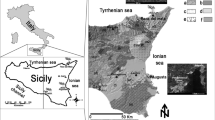Abstract
Hair analysis is a promising tool for routine clinical screening and diagnosis of heavy metal exposure and essential trace element status in the human body. Systemic intoxications have been identified by anomalously high values of toxins in hair samples. The aim of the present study is to evaluate the relationship between smoking habit of the family members and the levels of toxic and nontoxic trace elements in hair samples of children. The randomized cross-sectional controlled study comprised of 95 children (41 girls and 54 boys) between the ages of 1 and 6 years. After written informed consent was obtained, a face-to-face interview was conducted with the families about educational background, total income of the family, and smoking habits of family members. The mineral elements considered in this study were Zn, Se, B, V, Co, Mo, Mn, iron (Fe), Be, aluminum (Al), As, cadmium (Cd), lead (Pb), Hg, chromium (Cr), Ag, Be, nickel (Ni), copper (Cu), Sn, and antimony (Sb). Hair mineral contents were measured by inductively coupled plasma–mass spectrometry. The results showed that the levels of Cd, Pb, Cr, Sb, Fe, and Al in hair samples of children whose parents smoked were significantly higher than those whose parents were nonsmokers. The number of smokers and the frequency of smoking at home were positively correlated with Pb, Cd, Cu, Ni, and Sb levels found. At the same time, it was found that there was no correlation between toxic element concentrations and family income or educational background excluding the levels of Cd. A correlation was observed between the smoking status of family members and levels of toxic trace elements in hair where this correlation was more significant with the levels of Pb and Cd. High socioeconomic status and the level of education of family members did not have any effect on toxic trace levels in hair samples of children.

Similar content being viewed by others
References
Suzuki T (1988) Hair and nails: advantages and pitfalls when used in biological monitoring. In: Clarkson TW, Friberg L, Nordberg GF, Sager PR (eds) Biological monitoring of toxic metals. Plenum Press, New York, pp 623–641
Chłopicka J, Zagrodzki P, Zachwieja Z, Krośniak M, Fołta M (1995) Use of pattern recognition methods in the interpretation of heavy metal content (lead and cadmium) in children’s scalp hair. Analyst 120:943–945
Teresa M, Vasconcelos SD, Tavares HMF (1997) Trace element concentrations in blood and hair of young apprentices of a technical-professional school. Sci Total Environ 205:189–199
Northrop-Clewes CA, David I, Thurnham DI (2007) Monitoring micronutrients in cigarette smokers. Clin Chim Acta 377:14–38
Chiba M, Masironi R (1992) Toxic and trace elements in tobacco and tobacco smoking. Bull World Health Org 70:262–269
E.H.C, Committee on Environmental Hazards Committee on Accident and Poison Prevention (1987) Statement on childhood lead poisoning. Pediatr 79:457–465
Tuthill RW (1996) Hair lead levels related to children’s classroom attention-deficit behavior. Arch Environ Health 1:214–221
Baghurst P, Tong SL, McMichael AS, Robertson EF, Wigg NR, Vimpani GV (1992) Determinants of blood lead concentrations to age 5 years in a birth cohort study of children living in the lead smelting city of Port Pirie and surrounding areas. Arch Environ Health 47:203–210
Goyer RA (1996) Toxic effects of metals. In: Klaassen CD (ed) Casarett and Doull’s toxicology: the basic science of poisons, vol 5. McGraw-Hill, New York, pp 691–736
Schramm KW (1997) Hair: a matrix for non-invasive biomonitoring of organic chemicals in mammals. Bull Environ Contam Toxicol 59:396–402
Nowak B, Kozlowski H (1998) Heavy metals in human hair and teath: the correlation with metal concentration in the environment. Biol Trace Elem Res 62:213–228
Morton J, Carolan VA, Gardiner PHE (2002) Removal of exogenously bound elements from human hair by various washing procedures and determination by inductively coupled plasma mass spectrometry. Anal Chim Acta 455:23–34
Rao AN (2005) Trace element estimation—methods & clinical context. Online J Health Allied Scs 1:1
Torra, M, Rodamilaus, M, Cobelle J (2002) Human exposure to metal: some factors ınfluencing the metal concentrations. Trace Elem Electroly. 19(4):192–196.
Chatt A, Katz SA (1988) Hair analysis. VCH Publishers, New York. ISBN 0-89573-310-2
Kronstrand R, Förstberg-Peterson S, Kagedal B, Ahlner J, Larson G (1999) Codeine concentration in hair after oral administration is dependent on melanin content. Clin Chem 45:1485–1494
Weyermann M, Brenner H (1997) Alcohol consumption a smoking habits determinants of blood lead levels in a national population sample from Germany. Arch Environ Health 52:233–239
Nnorom IC, Asıbanjo O, Ojı-Nnorom CG (2005) Cadmium determination in cigarettes available in Nigeria. Afr J Biotechnol 54:1128–1132
Watanabe T, Kasahara M, Nakatsuka H, Ikeda M (1987) Cadmium and lead contents of cigarettes in various areas of the world. Sci Total Environ 66:29–37
Stohs SJD, Bagchi M (1997) Toxicity of trace elements in tobacco smoking. Inhal Toxicol 9:867–890
Özden TA, Kılıc A, Vehid HE, Toparlak D, Gokcay G, Saner G (2004) Blood lead levels in school children. Indoor Built Environ 13:149–154
Strachan DP, Cook DG (1997) Health effects of passive smoking. 1. Parental smoking and lower respiratory illness in infancy and early childhood. Thorax 52:905–914
Lanari M, Giovannini M, Giuffre L et al (2002) Prevalence of respiratory syncytial virus infection in Italian infants hospitalized for acute lower respiratory tract infections, and association between respiratory syncytial virus infection risk factors and disease severity. Pediatr Pulmonol 33:458–465
Afridi HI, Kazi TG, Brabazon D, Naher S (2011) Association between essential trace and toxic elements in scalp hair samples of smokers rheumatoid arthritis subjects. Sci Total Environ 15:93–100
Kazi TG, Jalbani N, Kazi N, Arain MB, Jamali MK, Afridi HI, Kandhro GA, Sarfraz RA, Shah AQ, Ansari R (2009) Estimation of toxic metals in scalp hair samples of chronic kidney patients. Biol Trace Elem Res 127(1):16–27
Landsberger S, Wu D (1995) The impact of heavy metals from environmental tobacco smoke on indoor air quality as determined by Compton suppression neutron activation analysis. Sci Total Environ 173:323–337
Chilmonczyk BA, Knight GJ, Palomaki GE, Pulkkinen AJ, Williams J, Haddow JE (1990) Environmental tobacco smoke exposure during infancy. Am J Public Health 80(10):1205–1208
Winkelstein ML, Tarzian A, Wood RA (1997) Parental smoking behavior and passive smoke exposure in children with asthma. Ann Allergy Asthma Immunol 78(4):419–423
Holberg CJ, Wright AL, Martinez FD, Morgan WJ, Taussig LM (1993) Child day care, smoking by caregivers, and lower respiratory tract illness in the first 3 years of life. Grp Health Med Assoc Pediatr 91(5):885–892
Mannino DM, Albalak R, Grosse S, Repace J (2003) Second-hand smoke exposure and blood lead levels in US children. Epidemiol 14:719–727
Özden TA, Gökçay G, Ertem HV, Süoğlu OD, Kiliç A, Sökücü S, Saner G (2007) Elevated hair levels of cadmium and lead in school children exposed to smoking and in highways near schools. Clin Biochem 40:52–56
Wolfsperger M, Hauser WM, Gossler W, Schlagenhaufen C (1994) Heavy metals in human hair from Austria and Italy: influence of sex and smoking habits. Sci Total Environ 156:235–242
Willers SW, Schutz A, Attewell R, Skerfving S (1998) Relation between lead and cadmium in blood and the involuntary smoking of children. Scand J Work Environ Health 14:385–389
Steindel S, Howanitz P (2001) The uncertainty of hair analysis for trace metals. JAMA 285:67–72
González-Muñoz MJ, Peña A, Meseguer I (2008) Monitoring heavy metal contents in food and hair in a sample of young Spanish subjects. Food Chem Toxicol 46:3048–3052
Author information
Authors and Affiliations
Corresponding author
Rights and permissions
About this article
Cite this article
Serdar, M.A., Akin, B.S., Razi, C. et al. The Correlation Between Smoking Status of Family Members and Concentrations of Toxic Trace Elements in the Hair of Children. Biol Trace Elem Res 148, 11–17 (2012). https://doi.org/10.1007/s12011-012-9337-5
Received:
Accepted:
Published:
Issue Date:
DOI: https://doi.org/10.1007/s12011-012-9337-5




